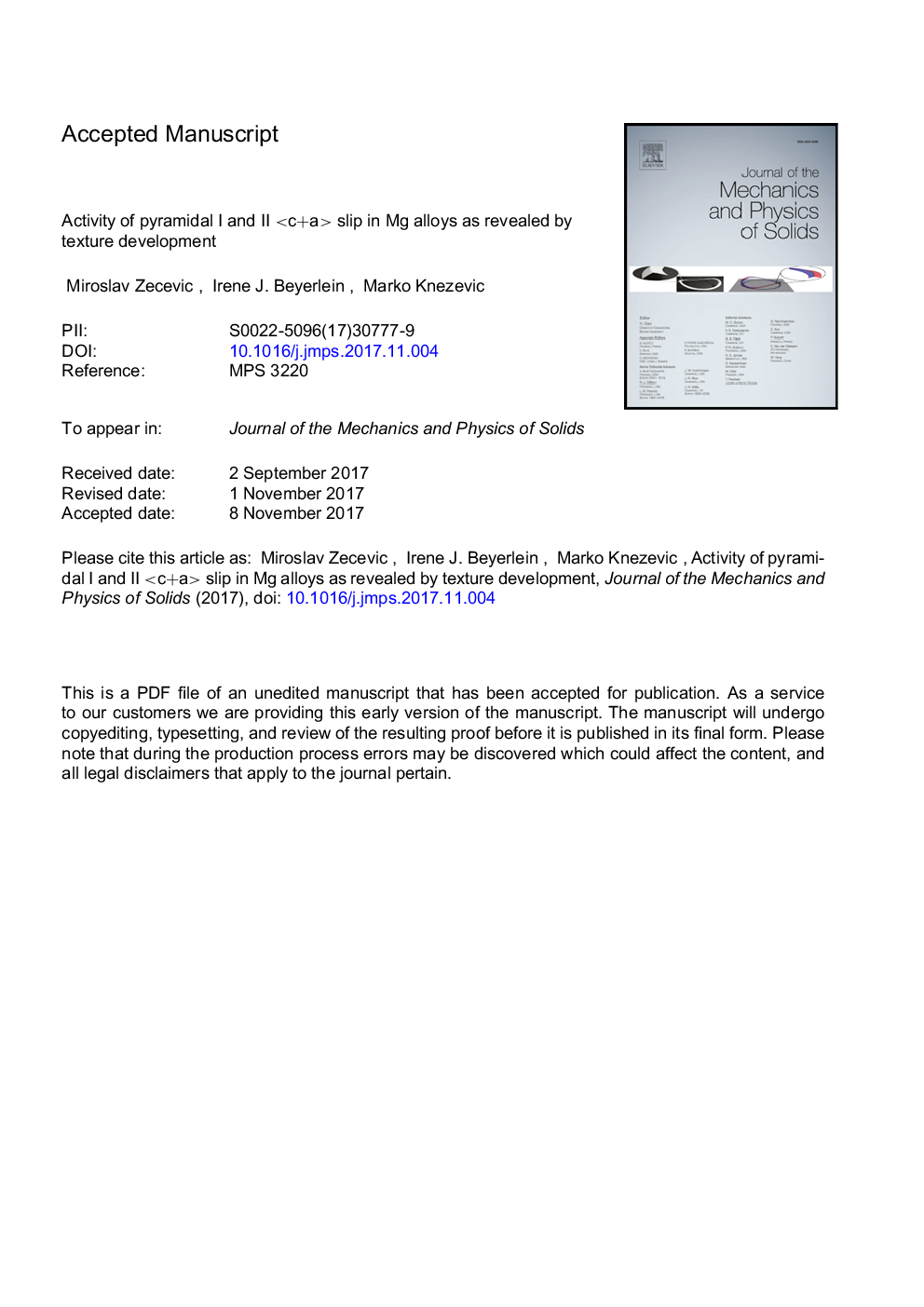| Article ID | Journal | Published Year | Pages | File Type |
|---|---|---|---|---|
| 7177567 | Journal of the Mechanics and Physics of Solids | 2018 | 30 Pages |
Abstract
Due to the geometry of the hexagonal close-packed (HCP) lattice, there are two types of pyramidal slip modes: {101¯1}ã112¯3¯ã or type I and {1¯1¯22}ã112¯3ã or type II in HCP crystalline materials. Here we use crystal plasticity to examine the importance of crystallographic slip by pyramidal type I and type II on texture evolution. The study is applied to an Mg-4%Li alloy. An elastic-plastic polycrystal model is employed to elucidate the reorientation tendencies of these two slip modes in rolling of a textured polycrystal. Comparisons with experimental texture measurements indicate that both pyramidal I and II type slip were active during rolling deformation, with pyramidal I being the dominant mode. A single-slip-mode analysis is used to identify the orientations that prefer pyramidal I vs. II type slip when acting alone in a crystal. The analysis applies not only to Mg-4%Li, but identifies the key texture components in HCP crystals that would help distinguish the activity of pyramidal I from pyramidal II slip in rolling deformation.
Keywords
Related Topics
Physical Sciences and Engineering
Engineering
Mechanical Engineering
Authors
Miroslav Zecevic, Irene J. Beyerlein, Marko Knezevic,
